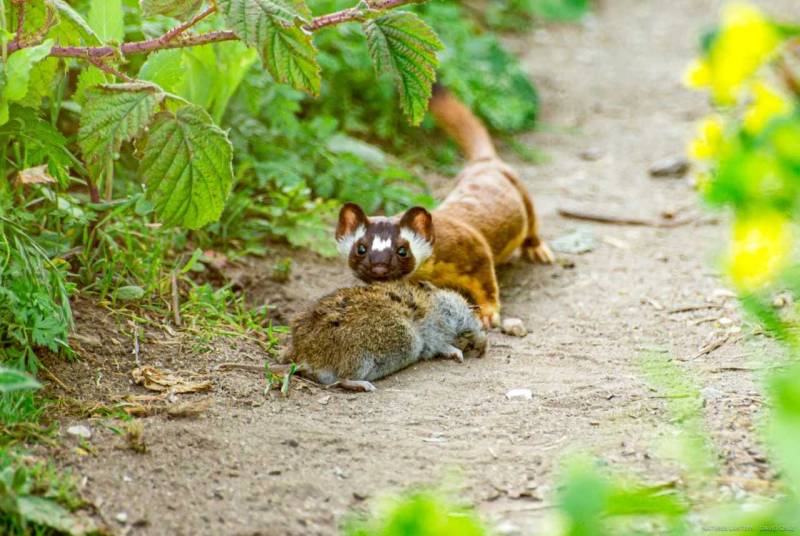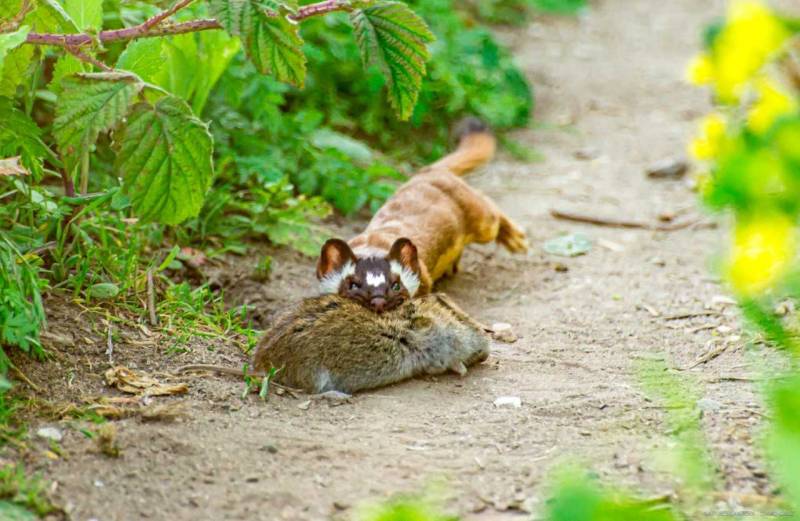I have to admit I did a double- and triple-take after seeing the pictures from David Cruz and Teresa Leija. The images show a furry, fierce-looking creature with a rodent of nearly equal size in its jaws.
The rodent is a vole, a small burrowing rodent widely unloved by those who prize perfect lawns. The sort of cute but semi-crazed-looking critter that had just dispatched it is a long-tailed weasel. Or Mustela frenata to its friends in the biology community.
Cruz and Leija — he is a wildlife photographer, she is a scout for Nature's Lantern, a nature-focused Bay Area media organization — encountered the scene while out on a late afternoon outing earlier this month at Bonny Doon Beach, just outside the town of Davenport on the northern Santa Cruz County coast.
They had come equipped with camera and binoculars ready to spot all the wonders the beach offers: dolphins and whales at sea, and maybe some brush rabbits amid the yellow and purple lupine, wild radish, mustard and blackberry on shore.
And they say they weren't disappointed.
"Teresa kept her binoculars on her eyes and spotted a pod of dolphins swimming north," Cruz said in an email. They saw various species of lizards, too, and a garter snake with a yellow stripe.

Then they saw something else — a small animal dashing across the trail with a rodent in its mouth: the long-tailed weasel and the late vole. In recounting that moment, Cruz can barely contain his excitement. This species is the most widely distributed of all North American weasels. Though it's not strictly nocturnal, it's rarely sighted. Like other weasels, it's known for its ferocity, its skill as a hunter and its boldness in taking on larger mammals as prey.
Cruz describes Mustela frenata this way: "The spirit of a lion crammed into a muscular body 20 centimeters (about 8 inches) long with the persistence and determination of a wolf, as they have to eat half their body weight every day. They are nature's ghost that evades detection and cameras like a jester that waves its black mask and black-tipped tail at you and disappears into your imagination.”
He said Friday he has been looking for these elusive predators for a long time.
"I have been up and down the bay looking for these guys — 10 years — and I finally got to see one," Cruz said. He had actually seen one earlier in the day chasing a rabbit, a sight he likened to "the way a cheetah hunts a gazelle." He didn't get a shot of that first sighting, though, and calls the weasel's second appearance "incredible."
